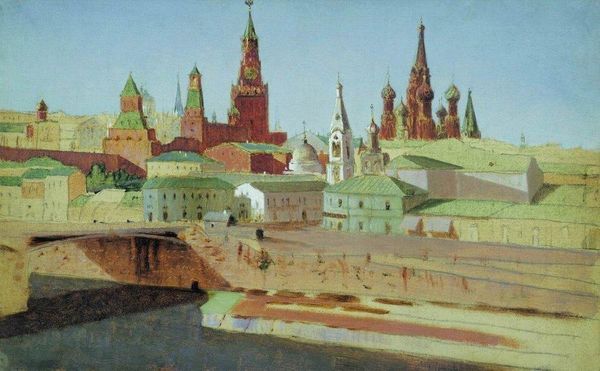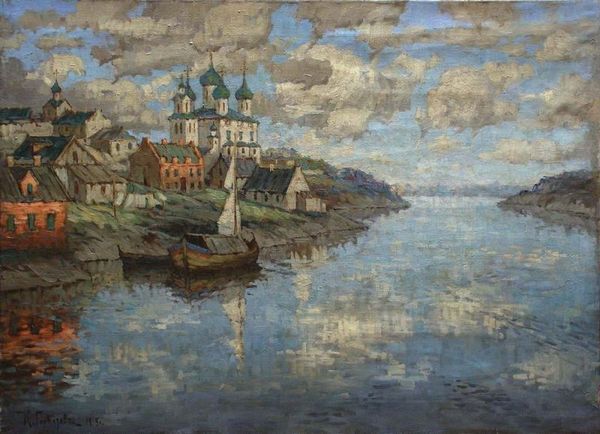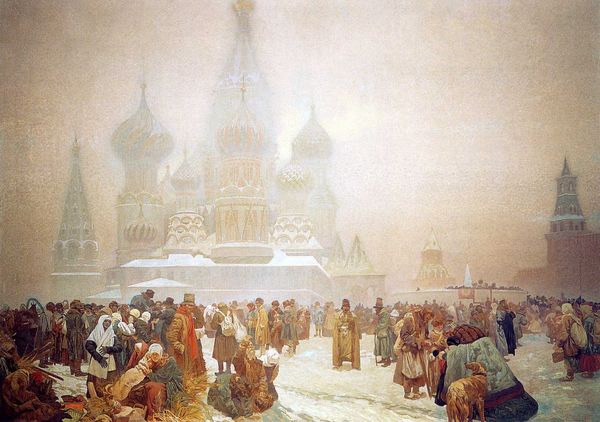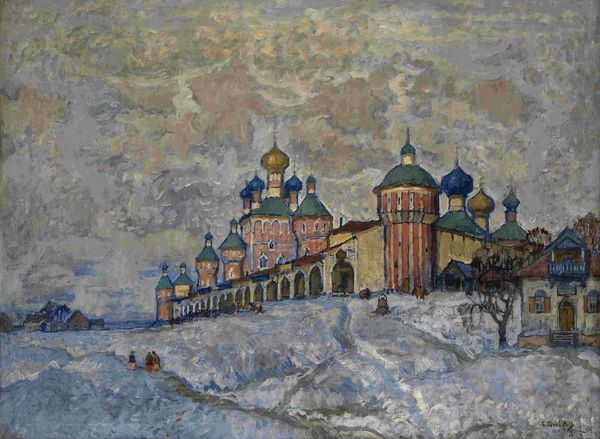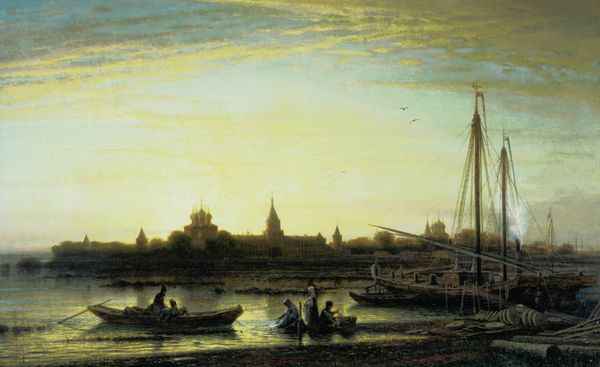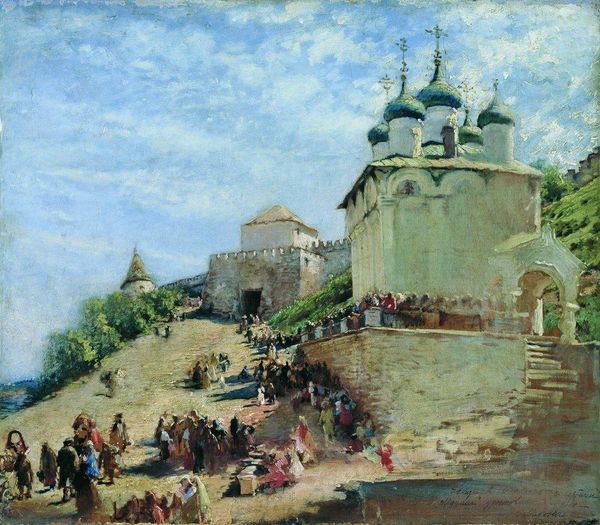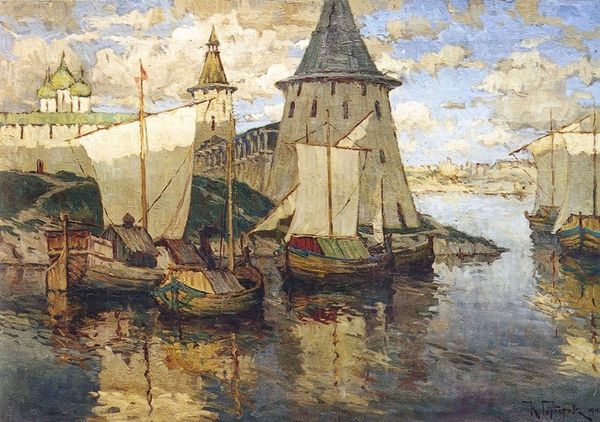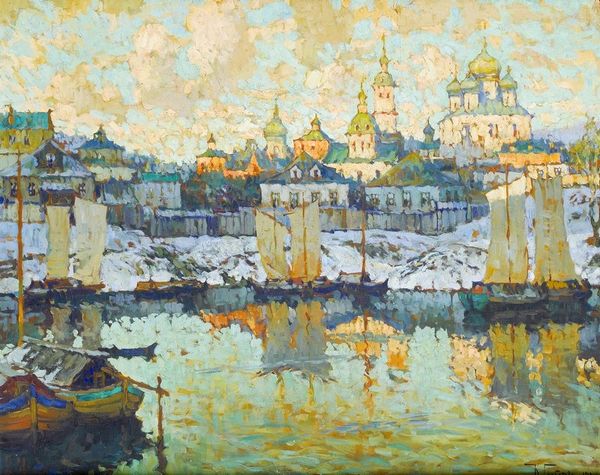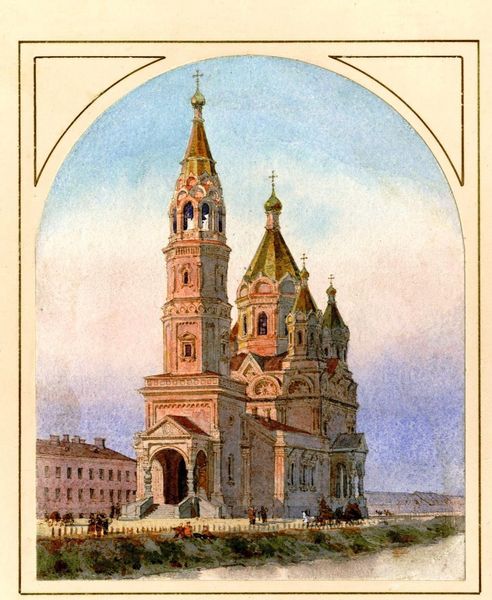
Copyright: Public domain
Curator: Alexey Bogolyubov painted this cityscape called "Easter Procession in Yaroslavl" in 1863. It is rendered in oil on canvas, and immediately presents an image of piety and tradition in old Russia. Editor: The muted palette immediately gives me a melancholic impression. Despite all those people gathered in procession, there's a quiet, almost subdued feel. Is it meant to evoke nostalgia for a past way of life? Curator: Undoubtedly, that plays a large part. Bogolyubov was painting during a time of immense social and political upheaval in Russia, and artworks like this tapped into a yearning for established customs and cultural cohesion. Look how the church dominates the landscape—it is quite deliberate. Editor: Right, the imposing architecture absolutely dwarfs the people. And considering the themes of spirituality and unity here, I am struck by the rather…exclusive depiction. Where are the diverse experiences? Does this vision conveniently gloss over any social or economic rifts present within Russian society at the time? Curator: These genre scenes frequently serve ideological purposes, presenting an idealized portrait of national identity. Of course, social commentary exists in Russian art, especially during that time period, but this particular piece leans towards representing a collective identity rooted in shared traditions and the Church. You can almost feel the weight of expectations associated with belonging. Editor: It makes me think about who had the power to represent that identity, and whose stories might be missing. The scene's beauty and artistic mastery is hard to deny. However, a critical look forces us to reflect on the silences embedded in its visual narrative. Curator: Exactly. It provides a window into the Russian Empire during the 19th century, revealing the complexities of its society through architecture, the customs presented, and yes, through the very choices regarding who and what is depicted. Editor: It’s definitely an invitation to go beyond the surface and to investigate the many layers of society present during that time period, whether explicit or implied. Thanks, this piece is full of potential discussion. Curator: A rich visual text that reveals quite a bit the more you spend looking.
Comments
No comments
Be the first to comment and join the conversation on the ultimate creative platform.

